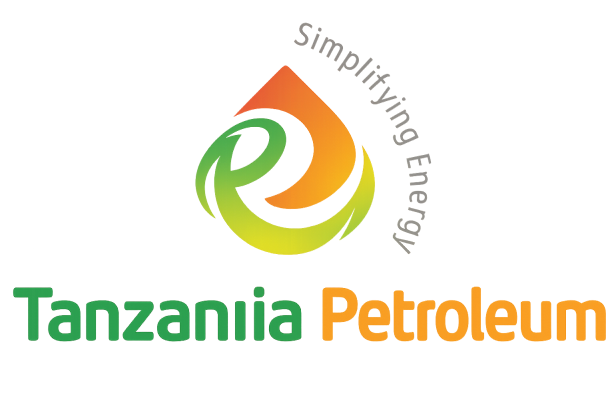A cost-effective and rapidly deployable solution for Tanzania’s energy growth
Tanzania has a truly world class gas project that is arguably more strategically important than the well publicised fields near Lindi, but which has so far gone largely under the radar. That natural gas project is the Ntorya gas field the Ruvuma Production Sharing Agreement (PSA) area, operated by joint venture partners ARA Petroleum Tanzania and Aminex Plc.
The Value Proposition of Ntorya.
- Size of Reserves vs. Development Cost
Ntorya is a multi trillion cubic foot (TCF) gas field. In February 2024, ARA Petroleum issued a report detailing the company’s updated view of resource potential, following the interpretation of 338km2 of a high-quality 3D seismic The report highlights that:
1.The field includes a “higher confidence” area of ca 75km² which “yields a revised and matured “Development Pending” unaudited Contingent Resource estimate of 3.45 TCF Gas Initially In Place (GIIP) with associated recoverable condensate of ca 20 MMbbls”.
2.“The current internally aggregated block total Pmean unrisked GIIP potential is estimated at ~16.4 TCF with a risked Pmean GIIP potential of ~6.9 TCF”

Equinor and Shell’s offshore gas discoveries near Lindi, boast larger reserves (16TCF and 20TCF respectively) compared to Ntorya’s estimated resources of 3.5 to 16.5 TCF. However, the development of these offshore assets comes with significantly higher costs; likely ranging from 10 to 20 times that of Ntorya. This is because, offshore projects require sophisticated subsea infrastructure and liquefied natural gas (LNG) facilities, greatly escalating their capital expenditure.
In contrast, Ntorya, being onshore, benefits from simpler logistics, established infrastructure, and therefore much lower development and operating costs. In addition, ARA Petroleum’s strategic use of a shared rig and efficient well planning will further enhance the project’s economic advantages.
Timeline to Production
It is reported that, due to their complexity, the offshore discoveries will take approximately 7 to 8 years from final investment sign-off to production. Ntorya, however, is on track to begin producing from the NT2 well by mid-2025, with additional wells (NT1 and CH1) expected to come online by the end of the year.
Strategic Importance.
There are only two producing assets in Tanzania; Songo-Songo and Mnazi Bay, with a combined production capacity of ~240 MMcfd. Those gas fields are much smaller than Ntorya. Also, production at Mnazi Bay is currently declining (but with plans to restore capacity by drilling additional wells), and the operator of Songo Songo is involved in a major legal dispute with the government and is therefore greatly limiting investment in the field. This is against a backdrop of demand growth for natural gas in Tanzania of 8-10% per annum over the last 14 years, and growth set to continue due to drivers including:
-
- Tanzania’s plans to increase its power generation capacity to 5,000 MW by 2030. Note that Tanzania has signed agreements with Rwanda, Burundi, Uganda, and Zambia, to supply them with electricity.
- Growth in natural gas for industry. Including notable examples such as the new fertilizer plant in the Lindi region that will demand 70 million cubic feet of natural gas per year, with deliveries expected to start in 2027.
- The national goal of ensuring that 80 percent of Tanzanians use clean cooking energy (natural gas) by 2034.
- Plans to export gas to neighboring countries including Uganda, Kenya, the Democratic Republic of the Congo (DRC) and Zambia. With some of those countries asking for expedited solutions to provide gas prior to any pipelines being constructed.
- The rollout of CNG filling stations and rapidly growing demand for natural gas for vehicles including cars and the DART buses.
The crucial point is this – considering the above points in the round, demand for natural gas in Tanzania is set to continue to grow strongly. The two existing suppliers do not have the current (or future planned) capacity to meet those needs. The offshore discoveries have not yet been given the green light and so are many years out from production. Therefore, only the Ntorya Gas Field has the scale and production readiness to meet Tanzania’s forecast short, medium (up to 5 years) and medium-to-long-term (5 to 10 years) increases in natural gas demand.
It is time that Ntorya should be given the recognition and coverage that it is due. To help explore that thought, imagine a situation where Tanzania has an urgent need for more cars and there are just two companies that have the resources to provide them – Company A (Tanzania’s offshore discoveries) has the resources to produce about times more cars than Company B (Ntorya), but those cars aren’t available for the next 7 to 10 years (compared to 6 months for Company B to start delivery) and when they are available, they may cost somewhere in the region of 10 to 20 times as much to produce as the cars from Company B.
In that situation, which project would you expect to receive all the limelight and be hailed as the most important project? Surely the massive (if slightly less vast) one that can deliver much more quickly and cheaply – Company B, analogous to Ntorya!
Hence, at Tanzania Petroleum, we believe that Ntorya is the new jewel in Tanzania’s oil and gas crown, and we are therefore keen to increase awareness of the project to stakeholders within Tanzania and further afield.
Other key points that contribute to the value and strategic importance of the Ntorya gas project
![]() Energy security – Ntorya is not just important for growth in energy demand in Tanzania. Due to the reliability of natural gas Vs renewable sources of energy (such as solar and hydro), the Ntorya project will play a crucial role in the composition of our energy mix to ensure a secure and reliable energy supply.
Energy security – Ntorya is not just important for growth in energy demand in Tanzania. Due to the reliability of natural gas Vs renewable sources of energy (such as solar and hydro), the Ntorya project will play a crucial role in the composition of our energy mix to ensure a secure and reliable energy supply.
 Encourage foreign and domestic investment – linked to confidence around natural gas supply as a direct input to industry, and in relation to energy supply. Boosting the economy and resulting in indirect job creation.
Encourage foreign and domestic investment – linked to confidence around natural gas supply as a direct input to industry, and in relation to energy supply. Boosting the economy and resulting in indirect job creation.
![]() Directly related job creation – related to the project itself. Particularly considering local content laws in Tanzania.
Directly related job creation – related to the project itself. Particularly considering local content laws in Tanzania.
![]() Reduced fuel imports – improving the balance of trade and availability of United States dollars in Tanzania.
Reduced fuel imports – improving the balance of trade and availability of United States dollars in Tanzania.
![]() Increased taxes/royalties – which will provide much needed government funds to help drive broader economic development
Increased taxes/royalties – which will provide much needed government funds to help drive broader economic development
 Blueprint for collaborative public-private partnership – Negotiations with Shell and Equinor have been ‘off and on’ with the government and the oil majors struggling to align on key aspects of as yet unsigned agreements. As mentioned earlier, the operator of one of the two fields actually producing at present, is in legal dispute with the authorities. In contrast, the relationship between ARA Petroleum and authorities seems very good. As evidenced by the recent signing of a Gas Sales Agreement and then the Ruvuma PSA Development Licence (incorporating Ntorya). ARA also appears to be in lock-step with TPDC who are partnering with them to deliver the project (including a pipeline to the Madimba Gas Processing Plant, that TPDC has committed to have ready for production to commence by mid 2025). As such, the Ntorya project appears to be a model in terms of collaboration between global oil and gas firms and local stakeholders.
Blueprint for collaborative public-private partnership – Negotiations with Shell and Equinor have been ‘off and on’ with the government and the oil majors struggling to align on key aspects of as yet unsigned agreements. As mentioned earlier, the operator of one of the two fields actually producing at present, is in legal dispute with the authorities. In contrast, the relationship between ARA Petroleum and authorities seems very good. As evidenced by the recent signing of a Gas Sales Agreement and then the Ruvuma PSA Development Licence (incorporating Ntorya). ARA also appears to be in lock-step with TPDC who are partnering with them to deliver the project (including a pipeline to the Madimba Gas Processing Plant, that TPDC has committed to have ready for production to commence by mid 2025). As such, the Ntorya project appears to be a model in terms of collaboration between global oil and gas firms and local stakeholders.
Conclusion
The Ntorya gas project represents a transformational opportunity for Tanzania and the wider region. While offshore fields by Shell and Equinor boast larger volumes of natural gas, their higher costs and extended timelines make them less strategically important in the short, medium and medium-to-long-term.
Ntorya’s combination of world-class scale (gas fields of more than 3 TCF are classified as “World Class Giants”; an exclusive club, comprising less than 1% of all gas fields globally), lower development costs, and rapid production timeline, positions it as the most significant natural gas asset for Tanzania’s energy future.
We will continue to monitor this exciting and strategically important project. We anticipate further news very soon from TPDC and the JV partners, and we will bring you further coverage and analysis in due course.






